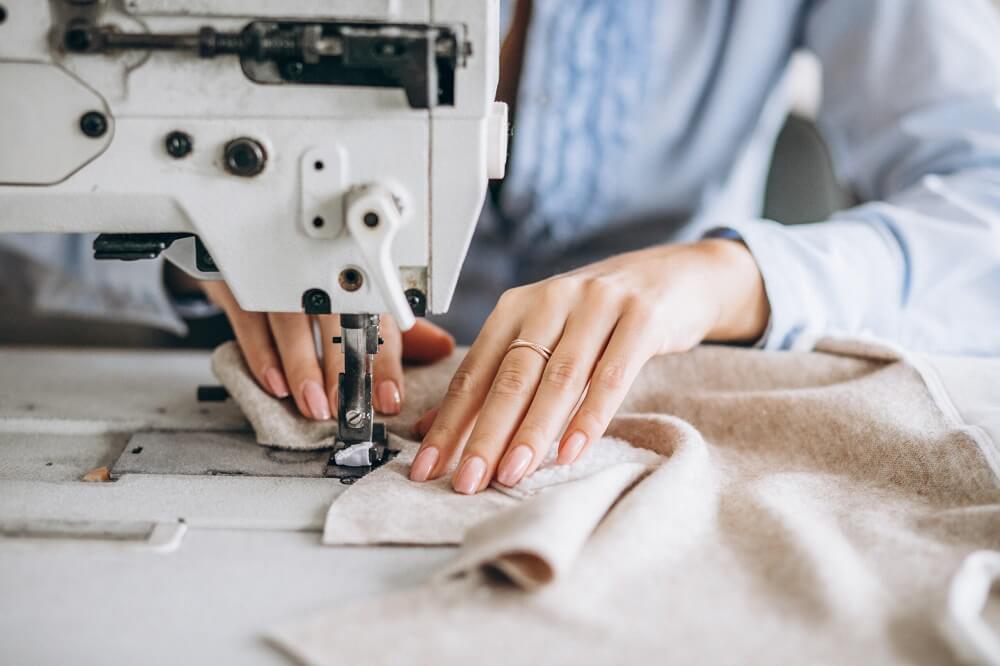Comprehending the Tailoring Process: From Fabric Selection to Final Suitable for the Perfect Closet
The customizing process is a complex interplay of art and science, starting with the vital decision of fabric selection and finishing in the specific modifications of final fittings. Each fabric kind brings special high qualities that influence not just the visual charm but also the garment's long life and viability for various occasions. Recognizing the subtleties of tailoring strategies can raise one's wardrobe to unprecedented levels of class. As we discover these components better, one have to think about how also the smallest details can significantly influence the overall end result of one's individual style.
Importance of Material Option
Choosing the best textile is crucial in the tailoring procedure, as it straight affects the comfort, sturdiness, and total aesthetic of the final garment (tailor perth). The choice of fabric sets the structure for the garment's design, efficiency, and capability. Different fabrics possess distinct properties, such as weight, breathability, and stretch, which can significantly affect how the garment drapes and fits the body
Moreover, fabric choice influences the garment's long life and convenience of treatment. High-grade textiles can endure deterioration, keeping their look and framework with time, while lower-quality products may result in pilling or fading. Furthermore, the best fabric contributes to the garment's capacity to change across celebrations and periods, consequently enhancing flexibility.
A tailored item made from a proper material not only showcases workmanship yet likewise elevates the user's self-confidence. Recognizing the nuances of fabric option is critical for any customizing venture. It ensures that the end product not just meets the visual wishes of the client however also straightens with functional needs, thus attaining a harmonious equilibrium between kind and function in the customized closet.
Kinds Of Fabrics and Their Uses
Recognizing the different sorts of fabrics readily available is important for making educated decisions throughout the customizing process. Each textile possesses special characteristics that determine its viability for particular garments and celebrations.
Cotton, known for its breathability and gentleness, is perfect for laid-back wear and summer garments. Its convenience allows it to be customized right into everything from t-shirts to outfits. Woollen, on the various other hand, is favored for its warmth and framework, making it an excellent option for official matches and outerwear - tailor perth. Its natural flexibility helps garments preserve shape with time.
Silk emanates deluxe and is lightweight, making it best for eveningwear and fragile shirts; however, it requires careful handling because of its delicacy. Bed linen, with its textured finish, is a popular choice for warm environments, giving a ventilated and crisp feeling, however it wrinkles conveniently, which might influence the garment's look.
Artificial textiles, such as polyester and nylon, offer toughness and resistance to creases, making them appropriate for daily wear and energetic garments. Understanding these material types and their residential properties permits for much better decision-making, making sure that each tailored item not only fits well but also straightens with the desired function and event.
The Tailoring Methods Discussed
The art of tailoring depends on a range of strategies that change fabric right into well-fitted garments. Central to this procedure is pattern preparing, where a dressmaker produces design templates based on the customer's dimensions and desired design. This preliminary step ensures that the garment will certainly fit the wearer properly before any reducing happens.
Once patterns are developed, reducing methods enter into play. Precision is paramount as errors can cause misfitting garments. Tailors typically utilize various reducing methods, such as single-layer reducing for elaborate layouts and multiple-layer cutting for efficiency on typical patterns.
Basting is one more important strategy, allowing tailors to momentarily stitch textile assemble for a preliminary installation. This method provides the possibility to evaluate the drape and total silhouette prior to final sewing.
Seaming techniques, including flat-felled joints and French seams, enhance the garment's durability and visual allure. Tailors likewise use techniques such as interfacing and cushioning to give structure and form to details areas, like shoulders and collars.
Last but not least, finishing methods, consisting of hemming and edge completing, make certain the garment's longevity while offering a polished look. Together, these methods create the backbone of effective tailoring, leading to exquisite, custom-fit clothing.
Fitting Modifications and Factors To Consider

Secret considerations consist of the shoulder fit, which needs to neither droop nor restrict activity, and the sleeve size, which ought to enable comfy arm movement while preserving a polished appearance. In addition, modifications at the waistline can improve the shape, with options to allow out or absorb material as needed.
The surge of trousers is another essential aspect; it ought to rest easily above the hips without creating discomfort, enabling convenience of motion. Hemming sizes for both pants and skirts need to mirror the wearer's recommended style while valuing percentages.

Keeping Your Tailored Apparel
Constantly adhere to the treatment label directions, which may recommend dry cleaning for fragile textiles or maker washing for even more long lasting products. Prevent frequent laundering, as this straight from the source can wear down the textile and modify the garment's shape.
Storage is equally vital; usage cushioned hangers for jackets and layers to preserve shoulder structure, and shop pants folded neatly or hung to prevent creasing. Protect garments from straight sunlight, which can fade shades and damages fibers.
Additionally, periodic evaluations for small fixings can stop larger issues. Look for loose switches, tearing seams, or indicators of moth damage, addressing these troubles quickly to keep the garment's stability.
Lastly, take into consideration seasonal rotation. Putting on tailored items in moderation permits materials to recoup, prolonging their lifespan. By carrying out these maintenance approaches, you can guarantee that your customized garments remain as immaculate as the day you initially used them, enhancing your excellent wardrobe for several years to come.
Final Thought
The tailoring process, including material choice, proficient strategies, and see this here specific suitable adjustments, plays an essential role in producing garments that improve both comfort and style. Comprehending the value of upkeep prolongs the life of customized garments, solidifying their value in a well-curated wardrobe.
Picking the ideal textile is essential in the tailoring process, as it directly influences the comfort, resilience, and overall aesthetic of the last garment. The option of material sets the foundation for the garment's style, functionality, and efficiency. Different fabrics have one-of-a-kind properties, such as stretch, breathability, and weight, which can considerably affect just how the garment drapes and fits the body.
The art of tailoring relies on a range of techniques that change material right into well-fitted garments.The customizing process, including fabric option, proficient techniques, and specific fitting changes, plays an important role in producing garments that enhance both convenience and design.
Comments on “Find the Best Tailor Perth: Premium Tailoring for Distinct Design”